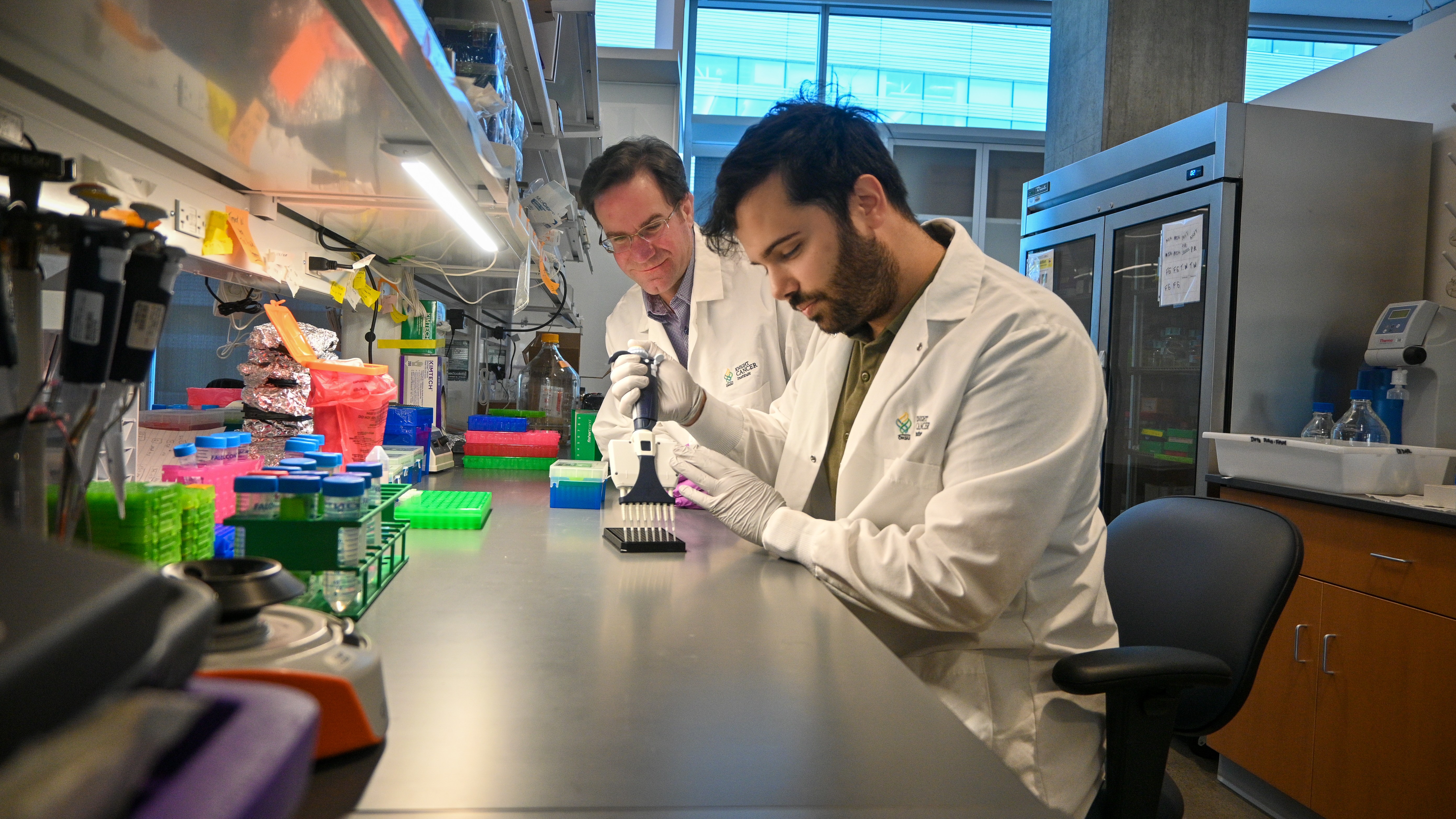'PAC-MANN' blood test aims to detect pancreatic cancer early
A new test called PAC-MANN is designed to detect signs of pancreatic cancer in blood. It's still in development, but the hope is that it will help catch the deadly cancer early.

Scientists are developing a test that uses a tiny blood sample to detect pancreatic cancer in its early stages.
If caught early, pancreatic cancer can potentially be treated. However, patients usually aren't diagnosed until the cancer has already spread, slashing their chances of survival. The disease is predicted to cause more than 51,000 deaths in the U.S. this year, accounting for over 8% of the nation's total cancer deaths.
One reason pancreatic cancer is often diagnosed at an advanced stage is that doctors have no routine screening tests for the disease, although some tests are being explored for people known to be at high risk. Now, researchers are developing a test that they hope could diagnose the deadly cancer with just one drop of blood.
They call the test PAC-MANN, which stands for "protease activity-based assay using a magnetic nanosensor," and they described it in a paper published in the journal Science Translational Medicine earlier this year.
Although the test has shown some promising early results, an expert told Live Science it is not yet ready to be used as a screening tool.
How PAC-MANN works
Just as the classic arcade game hero Pac-Man chases and gobbles ghosts, pancreatic tumors send out protease enzymes that chew through surrounding tissue. Protease enzymes break down proteins, helping cancer cells enter the bloodstream and metastasize, or spread beyond their original location.
Related: Simple blood tests could be the future of cancer diagnosis
Get the world’s most fascinating discoveries delivered straight to your inbox.
However, these enzymes appear in relatively low abundance in the bloodstream, and their activity levels vary among individuals with cancer. That makes their detection challenging with existing technologies.
To make these enzymes easier to detect, PAC-MANN uses tiny magnetic beads coated with fluorescent "probes." The idea is that, when a drop of blood from a cancer patient is added, tumor-made proteases slice the probes off the beads, releasing the fluorescent tags. A strong magnet pulls out all the beads, leaving only the freed fluorescent pieces.
The remaining glow, measured with a lab device called a fluorometer, is the readout. The more fluorescence, the higher the protease activity, signaling the likely presence of a tumor. The probes used in the test specifically react to MMP2, an enzyme identified as a standout in the blood of people with pancreatic cancer, compared to healthy individuals. That said, the enzyme is not unique to the cancer, as it has other known biological functions.
"The PAC-MANN assay requires such a minuscule volume of blood," study co-author Jared Fischer, a scientist with the Oregon Health & Science University (OHSU) Cancer Early Detection Advanced Research Center (CEDAR), told Live Science in an email.
So little blood is required that users could potentially use at-home skin prick or microneedle devices, "thus removing the need for a venous blood draw and a phlebotomist," as well as reducing the equipment and labor needed to run the test, he said.
Putting PAC-MANN to the test
The team validated the test using blood samples from 110 patients with pancreatic ductal adenocarcinoma (PDAC), the most common type of pancreatic cancer. They also examined blood from 170 healthy individuals, 45 people with pancreas inflammation (pancreatitis), and 31 with pancreatic neoplasia, meaning benign pancreatic tumors that can sometimes be precursors to cancer down the line.
They found that PAC-MANN correctly detected 73% of the PDAC cases. The detection of early-stage PDAC, specifically, was a little lower, at 62%. The test also correctly identified 98% of the noncancerous samples as such. That means, overall, 27% of the PDAC cases wrongfully came back "negative," and that 2% of the noncancerous samples were falsely identified as cancerous. These two key metrics are respectively known as test "sensitivity" and "specificity."
The team then tried combining PAC-MANN with a test for CA 19-9, another substance released by pancreatic tumors. High levels of CA 19-9 can be a sign of pancreatic cancer, but because other conditions can also drive up CA 19-9, they're not used for stand-alone cancer screening.
When PAC-MANN was combined with the CA 19-9 measurement, the combination test's sensitivity increased to 87%, on average, and it was 85% for early-stage cancer. The specificity fell slightly, though, to 96%.
The hope is that PAC-MANN could be used as a screening tool for people known to be at high risk for pancreatic cancer, study co-author Jose Montoya Mira, a research engineer at CEDAR, said in a statement. It could also be used alongside cancer treatments to see how well they're working, the authors said. CA 19-9 is an example of a test already used for this latter purpose.
However, Dr. John Neoptolemos, a research associate at the University of Heidelberg in Germany, urged caution. Protease enzymes are not unique to cancer, he told Live Science in an email. The enzymes play a variety of roles in the healthy body, such as aiding digestion and immunity.
"The strategy has a low probability of being used for early detection," Neoptolemos said. "The assay is not directly specific for cancer and has poor specificity for screening."
Neoptolemos added that there are now promising artificial-intelligence-based tests being developed for identifying and screening high-risk populations. As such, PAC-MANN would have to show clear added value over those emerging methods, Neoptolemos said.
All that said, PAC-MANN is still in development. Its makers are now expanding their studies, especially focusing on high-risk groups, to see if PAC-MANN can detect tumors earlier than currently possible. Montoya and Fischer have filed a patent application for PAC-MANN and are in the process of licensing the assay to a company.
This article is for informational purposes only and is not meant to offer medical advice.

Sayan Tribedi is a freelance science writer based in Kolkata, India. He holds a bachelor's degree in chemistry from the University of Calcutta and a master's in bioinformatics from Pondicherry University. With research experience in protein-protein interactions, he brings a strong scientific foundation to his writing. Sayan enjoys translating complex scientific ideas into accessible, engaging stories for the general public. His work has appeared in The Hindu and Science Reporter, among other publications.
You must confirm your public display name before commenting
Please logout and then login again, you will then be prompted to enter your display name.


